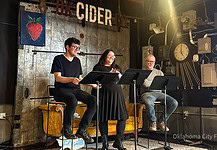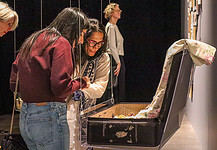Last Updated on March 10, 2024, 4:44 PM | Published: March 10, 2024
OKLAHOMA CITY — It’s possible that no other single physical subject – save for the human body itself – has been more exhaustively studied and interpreted through art as the flower.
With vivid coloration, graceful, naturally formed curves or finely sharp edges, and endless potential for variation, the flower is an introductory subject for many artists and a career-defining focus for some, with perhaps no greater champion than iconic 20th-century painter Georgia O’Keeffe.
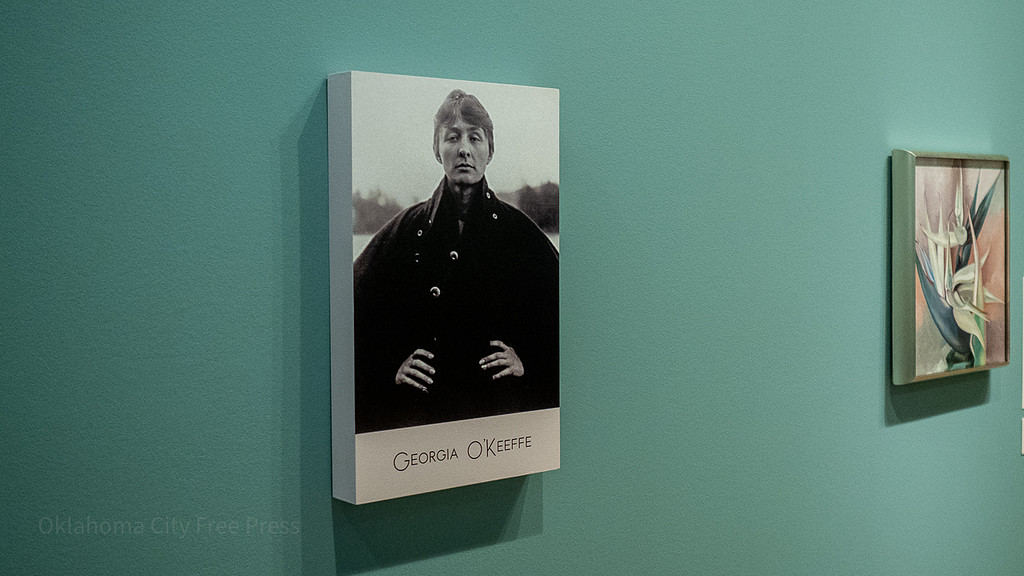
At the same time that O’Keeffe was crafting many of her renowned, delicately detailed floral paintings throughout the 1920s and 30s, pioneering American photographer Imogen Cunningham was also exploring her own fascination with flowers, balancing O’Keeffe’s fluid, painterly form with her own hyperfocused, near-academic studies.
Oklahoma City Museum of Art has combined works from the two orbiting artists into a new single-gallery exhibition, “Magnificent Beauty: Georgia O’Keeffe and the Art of the Flower,” running now through July 7th, with the pairing of works showcasing the full range of artistic potential and influence that the flower has bloomed.
Double Images
“It’s funny,” OKCMOA Curator of Exhibitions Jessica Provencher told Free Press, “when you’re researching O’Keeffe, Imogen Cunningham pretty much always comes up, and when you’re researching Cunningham, O’Keeffe always comes up. Cunningham has even been referred to as ‘the O’Keeffe of photography.’”
Both artists explored countless subjects for their painting and photography through numerous phases and fascinations in their careers, but both carry legacies inexorably tied to the imagery of flowers.
For O’Keeffe – particularly regarding the pieces on display in “Magnificent Beauty” – that often meant a focus on the vibrancy of color and the intersecting curvature of the floral form.
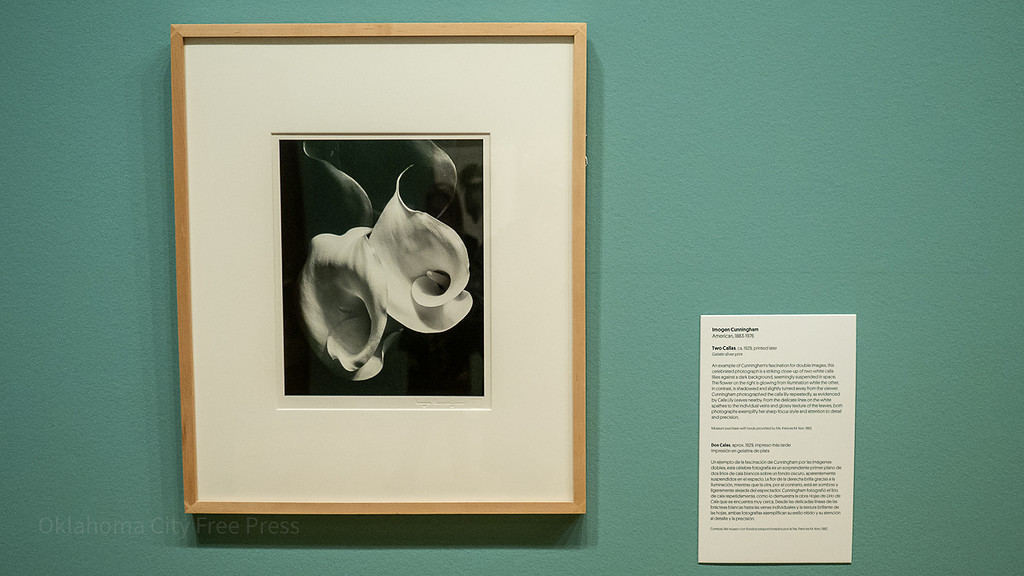
“Most of the flowers you’ll see here are actually calla lilies,” said Provencher. “So you can really compare a bit. O’Keeffe’s paintings really provided her with opportunities to explore variations in the calla lilies with different colors and different angles.”
Cunningham, however, was more often focusing her lens on sharper, finer details and stark black-and-white studies of the flowers’ structure, with her own famous double image of calla lilies in grayscale arranged alongside O’Keeffe’s colorful, impressionist offerings.
“It’s one of Cunningham’s most celebrated works and a good example of her fascination with double images,” Provencher said. “It’s very emblematic of her with the sharp focus and attention to detail.”
Natural Inspiration
Both women’s artistic careers through the early decades of the 1900s not only helped to develop the more deeply considered and minimal “modernist” style but also shone a light on the minute beauty of American nature-in-miniature.
Following a period of grand, sweeping western landscapes and homestead expressionism, artists like Cunningham and O’Keeffe began providing a close-up look at the individualized details in the personal gardens and household flowers that would come to dominate American décor and still-life identity.

“When Cunningham found herself at home with her young children in the 1920s, she started to photograph the plants and flowers in her California garden, because she didn’t have as much time to go out,” said Provencher. “She was actually taking these photos in the afternoons while the children were napping.”
Similarly, much of O’Keeffe’s fascination with certain flowers was due to their proximity in her daily life.
“Jimsonweed was something O’Keeffe covered a lot. She’s got tons of paintings of that, but also some photography as well,” Provencher said. “And that was actually something that bloomed around her house, beginning in the late summer and then through the first frost. So she really paid attention to the seasons and to its daily cycle, because it only blooms in the afternoon and then it closes back up.”
Blossoming Season
“Magnificent Beauty” is not only a wonderfully concise and timeless exhibition of its own, it’s also an apt addition to Women’s History Month and a perfect precursor to some similarly themed events coming soon to OKCMOA.
While this ode to the artistic exploration of the flower is still running, the museum will be presenting its annual Art in Bloom event from April 12th through 14th, bringing a fresh, in-person example of floral beauty to the galleries.
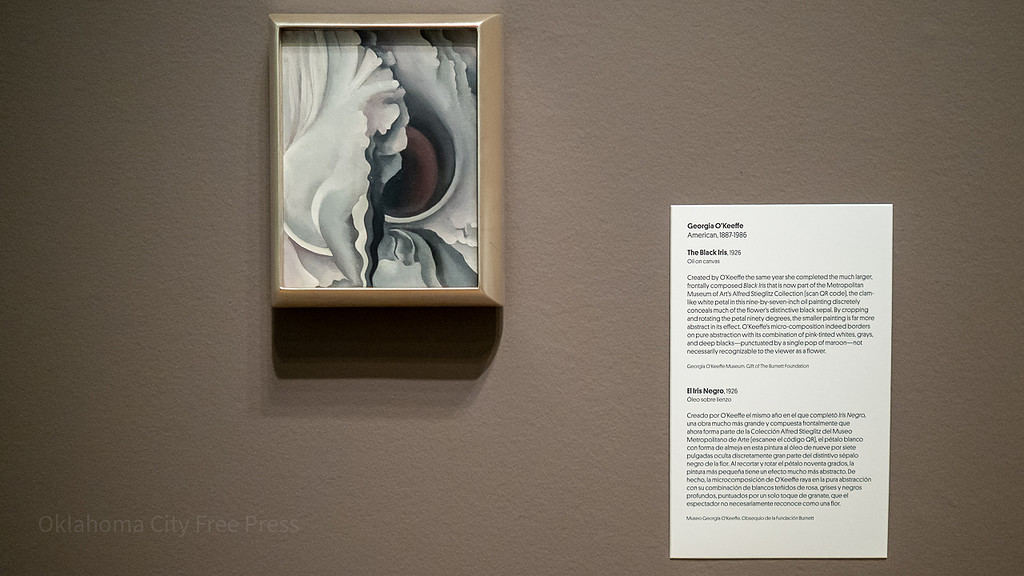
“Obviously it’s great because it feels like we’re really starting to celebrate the spring,” said Laura Rudicel, OKCMOA’s Director of Communications. “For the first time this year, we’re getting red buds and everything is literally starting to bloom. And so this ‘Magnificent Beauty’ works with our Art in Bloom and it all just pairs really nicely with the season.”
“Magnificent Beauty: Georgia O’Keeffe and the Art of the Flower” is open now through July 7th at the Oklahoma City Museum of Art.
For museum hours, tickets, and more information, visit okcmoa.com.
Correction: In the original version of this story, the last photo was of a work by Imogen Cunningham and mislabeled as “The Black Iris” by Georgia O’Keeffe. The correct photo for “The Black Iris” has been inserted. We apologize for the error.
Brett Fieldcamp has been covering arts, entertainment, news, housing, and culture in Oklahoma for nearly 15 years, writing for several local and state publications. He’s also a musician and songwriter and holds a certification as Specialist of Spirits from The Society of Wine Educators.




